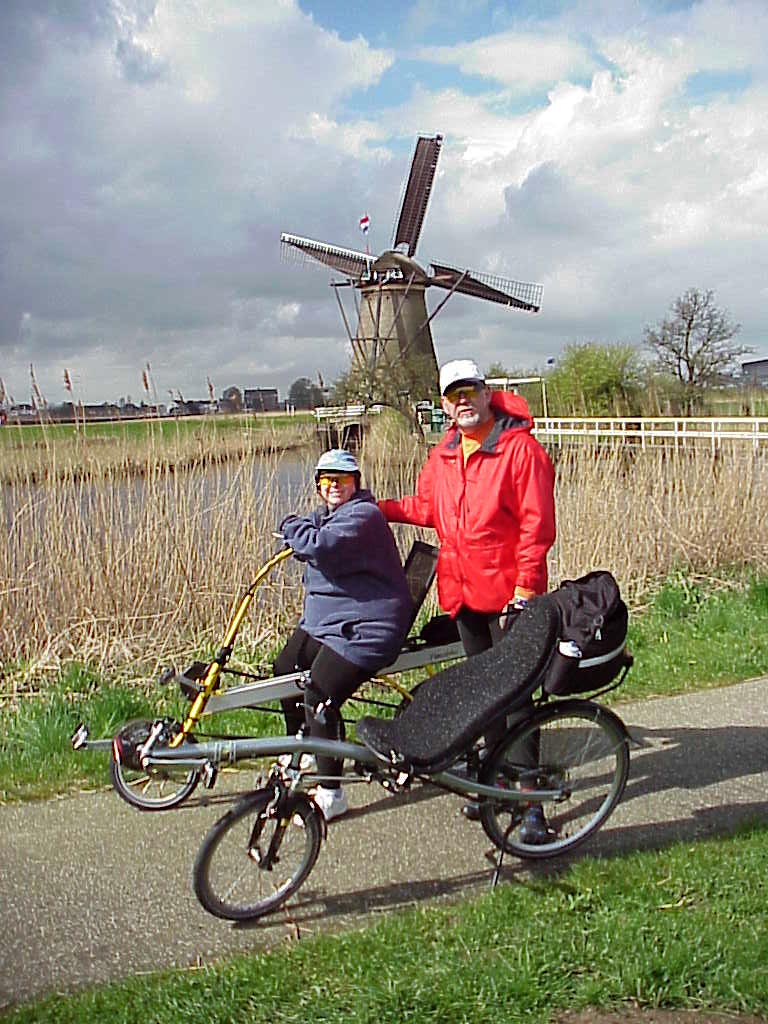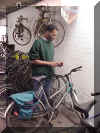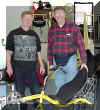Bikes and Biking in Holland

Because the Dutch start to bike before they can walk, and the country is flatter than a pannekuken (pancake), no other country on earth has integrated the bicycle into the transportation infrastructure like Holland. There are approximately 14 million bicycles (it seems that most of them are chained together in front of the Central Station in Amsterdam) for the 14 million people in the country. Everyone bikes - from kids to commuters to grandparents on their way to the store.
There is a network of dedicated bike paths (fiets paads) comprising some 20,000 kilometers that allows a cyclist to travel throughout the country with minimal contact with cars. Since the country is relatively small, it makes sense to do most of your commuting and short trips by bike. Longer trips can combine biking with train travel for cheap, rapid transit.
We were surprised by a number of things however:
Helmets - only worn by racers or tourists (our guide Armand says the Dutch consider helmet wearers "weenies"). It's not uncommon to see a parent riding with two kids on a bike (with kid seats mounted on the handlebars and rear rack) and none of them wearing a helmet. I don't know what the Dutch statistics are for bicycle-related head injuries.
Types of bikes - we expected to see a wide variety of bikes, particularly
recumbent bikes, trikes, and fully enclosed human powered vehicles. With
the exception of a few utility bikes used for cargo hauling in the cities and a
couple of Flevobike utility trikes  , the
typical Dutch bike is a conventional upright bike sporting a 3-speed hub and
coaster brakes. During our 12 days in Holland and Belgium, we saw 8
recumbent bikes on the road.
, the
typical Dutch bike is a conventional upright bike sporting a 3-speed hub and
coaster brakes. During our 12 days in Holland and Belgium, we saw 8
recumbent bikes on the road.
Condition of bikes - except for the occasional tourist or racer, the average bike has a uniform coating of rust and ugly spray paint (stripes of fluorescent orange or green seem to be the most popular - probably to make it easier to pick out your bike among the thousands).
Locks - no matter how nasty a bike looks, it is open to theft (Holland has
one of the highest bike theft rates in the world). It is not uncommon to
see a $20 bike secured to a lamp pole with 2 or three massive locks that
outweigh and out value the bike they are securing. Rear wheel locks like this
one are also popular (note, this photo is of a bike in Belgium, thus there is no
rust and nasty spray paint that you would see on a Dutch bike). 
Rental bikes are available all over the city. We visited John's Fiets
Inn, a rental shop next to our apartment.  John will rent you a standard bike, or you can get a "postbank bike"
John will rent you a standard bike, or you can get a "postbank bike"  from an automated stand and return it to any metro stop or train station in
town.
from an automated stand and return it to any metro stop or train station in
town.
Our recumbents got a few odd looks and the occasional recognition from the locals (the Dutch term for recumbents is "ligfeits" - pronounced "licks feets").
On Friday, we visited Ligfeitswinkle
Amsterdam, a
recumbent bike shop. Owner Gerhard Diddens  and his potential partner Siward allowed us to test ride a number of bikes and
select the bikes we would rent for our tour.
and his potential partner Siward allowed us to test ride a number of bikes and
select the bikes we would rent for our tour.
On
Saturday, our bikes are delivered to the boat. Jayne gets a Flevobike
Oke'-Ja and I have a Nazca Explorer, both bikes made in Holland. 

The bikes work well for touring, though I only got a couple of chances to really open up and cruise on the Explorer, it was a very fast, comfortable bike.




